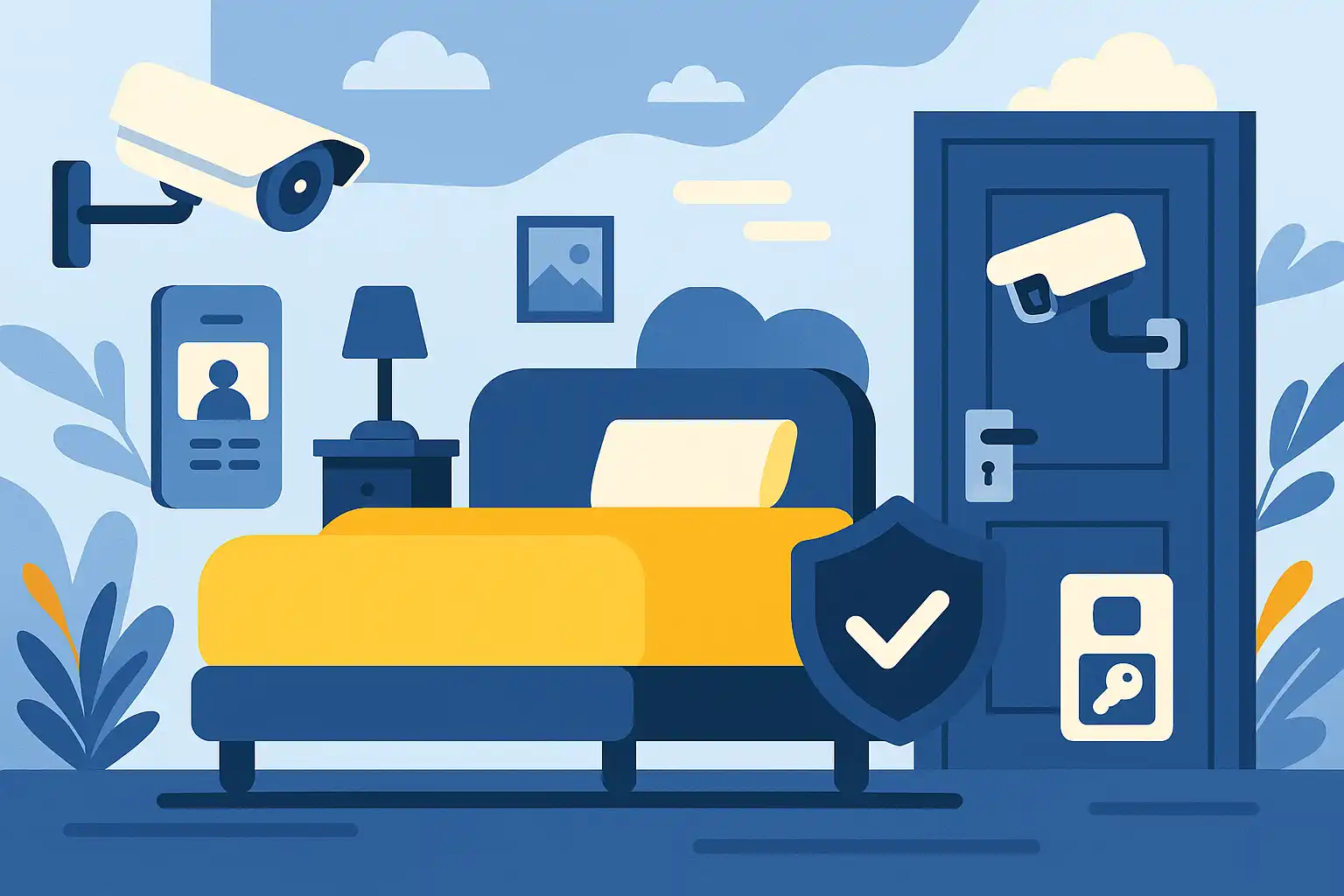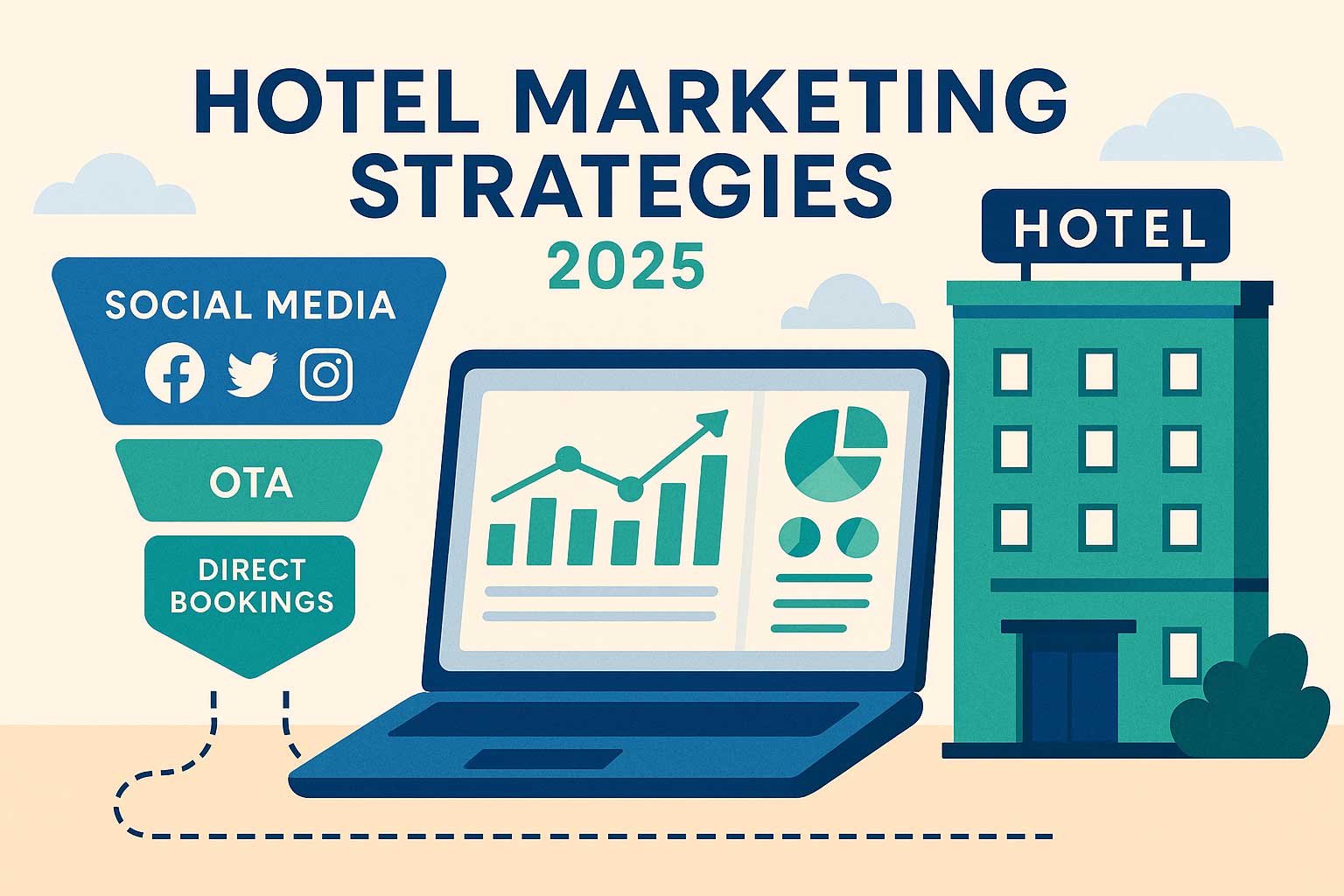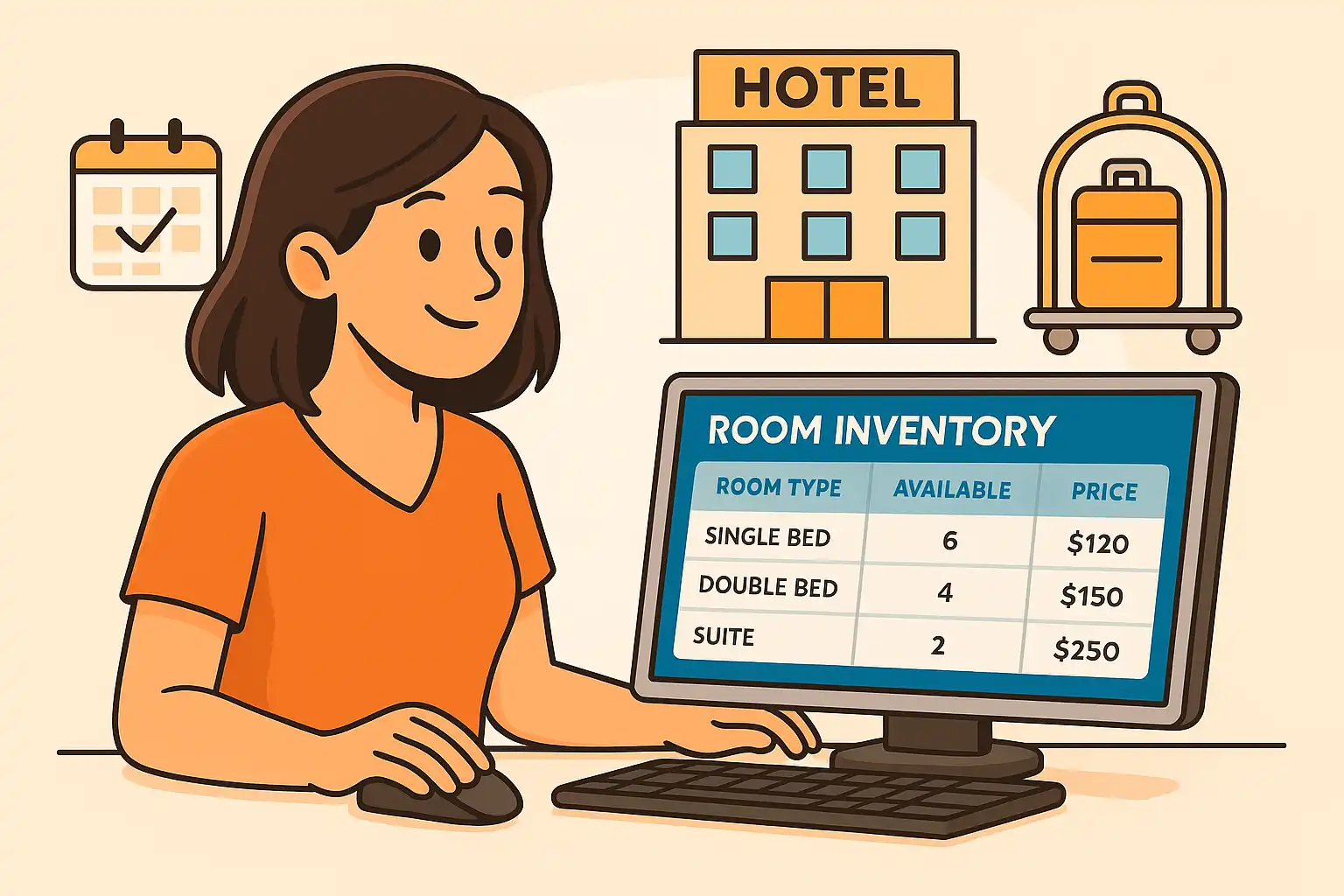Hotel Room Inventory: Maximizing Availability and Revenue
Nov 9, 2025
 Mika Takahashi
Mika TakahashiPopular Categories
Hotel Technology & InnovationHotel Operations OptimizationDigital MarketingIndustry TrendsRevenue ManagementHospitality Industry
Popular Categories
Trending Post

Hotel Walk Letter Template: Professional Guest Communication

Online Travel Agents: What They Are and How They Work

Hotel Security Systems: Modern Protection Solutions

Hotel Advertising: Complete Guide to Boost Bookings and Revenue

25 Hotel Marketing Strategy Ideas for 2025: Complete Guide

AI Reservation Agent: Revolutionizing Hotel Booking and Guest Experience

PMS Communication: Streamlining Property Management Through Effective Guest Messaging
Table of contents
Hotel room inventory is the backbone of any hotel’s success. It directly affects your occupancy rates and revenue potential. In today’s competitive hospitality industry, managing your hotel inventory well can be the difference between a thriving property and one that struggles to keep its doors open.
Managing hotel room inventory isn’t just about counting empty rooms. It’s about smart strategies, real-time tracking, and dynamic pricing that respond to market demand and seasonal shifts. In this guide, we’ll walk through the essentials—from basic calculations to the tech tools that make inventory management smoother and more effective.
Whether you run a boutique hotel or a large chain, mastering property management systems, channel managers, and revenue management tools will help you optimize room availability and boost your revenue.

What Is Hotel Room Inventory?
Simply put, hotel room inventory is the number of rooms you have available to sell at any given time. You calculate it by subtracting sold and out-of-service rooms from your total room count. But here’s the catch: your actual sellable inventory changes throughout the day as bookings come in, cancellations happen, or rooms go offline for maintenance.
For example, if you have 200 rooms but 10 are under renovation and 5 are blocked for staff use, your available inventory is 185. Keeping track of these fluctuations in real time is key to maximizing occupancy.
Hotel inventory management covers the entire process of tracking, allocating, and optimizing room availability across all your booking channels. That includes your direct booking engine, online travel agencies (OTAs), and global distribution systems (GDS). Every unsold room is lost revenue because once the night passes, you can’t sell that room again.
How to Calculate Hotel Room Inventory
The formula is straightforward: Total rooms minus sold rooms minus out-of-order rooms equals available inventory.
Let’s say you manage a 150-room hotel during a busy weekend. You’ve sold 120 rooms, 5 are under maintenance, and 2 are blocked for staff. Your available inventory is 23 rooms (150 - 120 - 5 - 2 = 23). Breaking this down by room type helps you price and allocate rooms more effectively.
| Room Type | Total Rooms | Sold | Out of Order | Available |
|---|---|---|---|---|
| Standard | 100 | 85 | 3 | 12 |
| Deluxe | 35 | 25 | 1 | 9 |
| Suites | 15 | 10 | 1 | 4 |
| Total | 150 | 120 | 5 | 25 |
Tracking inventory daily helps you react quickly to demand changes, while weekly and monthly reviews reveal seasonal trends and guide your long-term plans.
Factors Affecting Hotel Room Inventory Availability
Seasonality is a big player. Summer holidays, winter breaks, or local events can flood your booking calendar or slow it down. Knowing these patterns means you can adjust pricing and inventory to make the most of peak times and stay competitive when things slow.
Last-minute cancellations and no-shows typically hover around 5-15% in urban hotels. That’s a big chunk of potential revenue slipping away—unless you plan for it with strategic overbooking based on your historical data.
Maintenance and unexpected room outages also shrink your available inventory. Coordinating closely with housekeeping and maintenance teams to schedule repairs during low-demand periods helps keep your sellable rooms at a maximum.
Group bookings and blocks can tie up inventory weeks or months in advance. Balancing these guaranteed revenues with the chance of higher-paying individual bookings during peak times is a constant juggling act.
Walk-in and same-day bookings are wild cards. They can fill empty rooms but require flexible inventory management and rate control to avoid undercutting your revenue.
Room Inventory Management Strategies
Strategic overbooking, informed by six months of cancellation data, can boost your occupancy without turning away guests. For example, if you know your no-show rate is 8% on Fridays, you might accept slightly more bookings than rooms available—but always with a backup plan.
Releasing blocked group rooms 72 hours before arrival lets you open inventory to individual bookings that often pay higher rates.
Overbooking Techniques
Analyze your data by booking source and room type. On high-demand dates like New Year’s Eve, play it safe—overbooking too aggressively risks unhappy guests and damage to your hotel’s reputation.
Backup accommodations with nearby hotels are a must-have safety net. Have clear agreements and guest transport plans ready to keep everyone happy if you need to walk a guest.
Clear communication is key. When guests are “walked,” offering compensation and alternatives can turn a frustrating experience into a positive one.
Channel Distribution Management
A balanced channel mix might look like 40% direct bookings, 35% OTAs, and 25% corporate or group bookings. Adjust this based on your market and guest base.
Maintaining rate parity across platforms like Booking.com, Expedia, and your direct site protects your direct booking revenue. Your channel manager and revenue management system should keep prices consistent and update availability instantly.
Restricting last-room availability on high-commission OTAs encourages guests to book directly, saving you commission costs.
Real-time syncing across channels prevents double bookings, a headache for front desk and housekeeping staff alike.

Technology Solutions for Room Inventory Tracking
Property management systems (PMS) with real-time dashboards give you instant insight into room status and bookings. Modern PMS integrate with other tools, giving you a full picture of operations and guest preferences.
Channel managers like Prostay update dozens of sales channels at once, ensuring your inventory and rates match everywhere.
Revenue management systems (RMS) use demand forecasting to adjust prices and inventory automatically, squeezing maximum revenue from every room.
Mobile apps for housekeeping speed up room status updates, letting you sell rooms faster after cleaning is done. This boosts same-day availability and fills last-minute bookings.
Integration between PMS, booking engines, and third-party platforms streamlines your workflow and reduces manual errors.
Best Practices for Room Inventory Optimization
Review your inventory daily around mid-afternoon. This timing lets you assess check-outs, housekeeping progress, and potential walk-in demand before the evening rush.
Hold weekly forecasting meetings with your revenue, front desk, and sales teams to adjust strategies based on booking pace and local events.
Coordinate housekeeping schedules tightly to maximize room turnover. Even 30 minutes saved per room can add up to more sellable hours daily.
Tracking guest preferences helps you assign rooms that boost satisfaction and make the best use of your inventory.
Keep an eye on metrics like revenue per available room (RevPAR) and average daily rate (ADR) by room type. Comparing these to historical and market data uncovers opportunities for improvement.
Common Room Inventory Management Challenges
Slow updates between booking channels can cause problems with hotel room inventory, in particular oversells. That means double bookings and frustrated guests. Automated systems help avoid this by syncing inventory instantly.
Manual updates risk human error—missed bookings, oversells, or lost revenue. Automation cuts these risks and keeps your records accurate.
Unexpected maintenance can suddenly reduce available rooms. Having flexible hotel room inventory and pricing strategies helps you adapt quickly, and that's the key point of a proper hotel inventory management plan.
Group booking changes can disrupt your inventory planning. Stay agile and communicate closely with sales teams to adjust allocations.
Competition from vacation rentals shifts demand patterns. Understand your unique strengths—service, location, amenities—to stay competitive.
Pro tip:
Set up automated alerts in your PMS to notify you immediately when room status changes or inventory thresholds hit critical levels. This helps you act fast and avoid lost revenue.
Myth vs Reality:
Myth: Overbooking always leads to unhappy guests.
Reality: When based on solid data and paired with backup plans, strategic overbooking can boost occupancy without hurting guest satisfaction.
Conclusion
Hotel room inventory management is a balancing act. It’s about knowing your rooms inside and out, using data to forecast demand, and leveraging technology to keep everything running smoothly. When done right, it maximizes your occupancy, revenue, and guest satisfaction.
Start by tightening your daily inventory tracking, coordinating across departments, and using integrated tech tools. The payoff? More rooms sold, fewer headaches, and happier guests.
Key Takeaways
- Hotel room inventory fluctuates daily due to bookings, maintenance, and blockages—real-time tracking is essential.
- Strategic overbooking, informed by historical data, can increase occupancy while minimizing guest issues.
- Balanced channel distribution and rate parity protect revenue and avoid double bookings.
- Technology like PMS, channel managers, and RMS streamline inventory management and boost revenue.
- Close coordination between front desk, housekeeping, and sales teams improves room availability and guest satisfaction.
- Regular reviews of performance metrics help identify opportunities for ongoing improvement.
